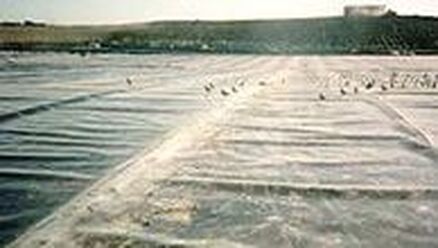|
Client:
Ford Motor Company Location: Allen Park, MI Prime Consultant: NTH Consultants, Ltd. NTH Budget: $316,000 |
Allen Park Clay Mine
Development of Solid Waste Landfill Project Overview
Ford Motor Company retained NTH to design an industrial solid waste landfill cell at the abandoned Allen Park Clay Mine facility. Design of this 21-acre site within a four-month period was essential for construction to be completed before the onset of adverse weather conditions. Project Scope Geotechnical Investigation and Landfill Design The new cell design specified a 35-foot deep excavation adjacent to 10-25 foot embankments with a slope height of 45 to 60 feet. Cell design required stabilization of the 550-foot long, north slope, to address effects of a major slope failure that occurred in the early 1980’s during mining operations. The design of stable side slopes for the landfill presented a major geotechnical challenge. NTH conducted a geotechnical investigation to estimate the in-situ shear strength of the soft, silty, clay soils. Using this data, we developed a two-phased construction approach, in which the upper soils on the existing slopes were used to construct stabilization berms on the floor of the cell. Following the deposit of waste in the lower portion of the landfill, relatively steep slopes will be constructed to complete the landfill and maximize its disposal capacity. Artesian groundwater conditions existed at the site. The artesian conditions could have created slope stability problems and possibly lifted the geosynthetic liner. NTH designed an artesian water collection and removal system below the liner to prevent this potential problem. The underdrain, consisting of geofabric and geonet, transmit artesian water to a collection system below the landfill. Construction Monitoring A full-time, geotechnical engineer, knowledgeable of the subsurface conditions and their potential impact on the landfill design, monitored construction operations. Areas of poor soil conditions were identified, localized and addressed as construction proceeded. Unstable soils were removed and replaced with compacted clay fills, in the area of the prior north slope failure. A 60-foot wide stabilization berm was added at the toe of the north slope to control displacements caused by rapid reconstruction of the embankment. |

